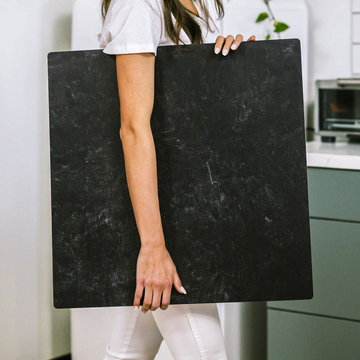As a food photographer, I've spent countless hours perfecting the delicate dance between food and its backdrop. While wooden surfaces might seem like a simple choice, there's fascinating science behind why they work so well. Let's dive into what 15 years behind the camera has taught me about wooden backdrops - and trust me, it's more than just pretty grain patterns!
The Hidden World of Wood Texture
Ever wondered why some wooden surfaces make your food photos pop while others fall flat? It's all in the microscopic details. Through my lens, I've discovered that wood grain depth between 0.5mm and 2mm creates that perfect sweet spot for light interaction. Think of it as nature's own light diffuser!
Here's a pro tip I learned the hard way: quarter-sawn oak is your best friend for those dreamy highlight effects. Why? The cellular structure catches light in a way that creates natural dimensionality - something that took me years to fully appreciate.
Temperature: The Silent Game-Changer
Here's something they don't teach you in photography school: wood temperature matters. Ever shot ice cream on a wooden surface and found mysterious condensation ruining your shot? That's the wood's thermal conductivity at play.
I always keep a thermometer in my kit now. Keeping your wooden backdrop within 5°F of room temperature can be the difference between a perfect shot and a cloudy mess. When shooting hot dishes, this temperature control becomes even more crucial for capturing that perfect steam wisp!
The Light Dance
Let me share my favorite technical trick: the 45-degree rule. Position your wood grain at a 45-degree angle to your main light source, and watch magic happen. It's like the wood grain suddenly comes alive, creating depth that draws viewers into your image.
Modern Innovations Worth Knowing
The world of wooden backdrops isn't standing still. I've been testing new engineered surfaces that combine classic wood aesthetics with modern photographic optimization. Some even come with built-in temperature regulation - a game-changer for long shooting sessions.
Practical Tips for Your Next Shoot
- Start with the 45-degree rule for lighting
- Keep a surface thermometer in your kit
- Use circular polarizers at 57 degrees when shooting particularly reflective foods
- Consider hybrid surfaces for challenging conditions
Remember: Great food photography is part art, part science. Understanding both will elevate your work from good to exceptional.
What's your experience with wooden backdrops? Share your stories and questions in the comments below - I love diving deep into the technical aspects of food photography!


